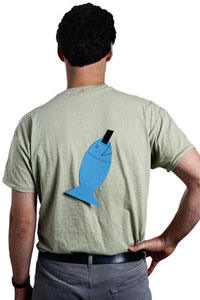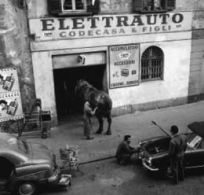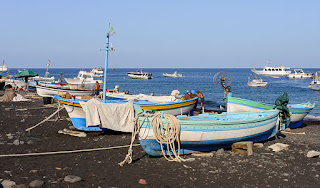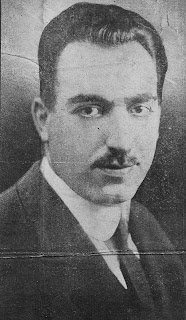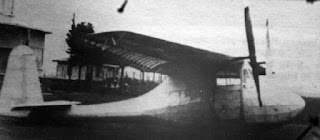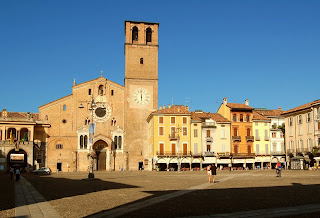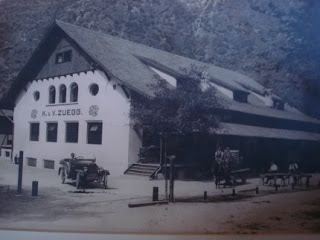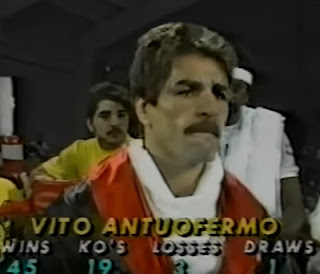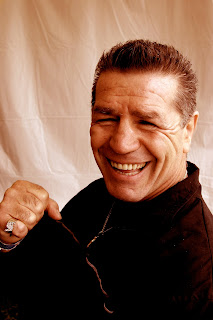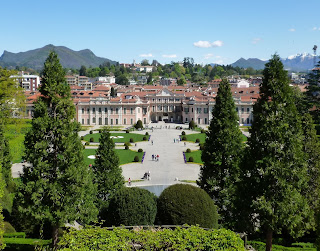Engineer used profits from military trucks to launch famous marque
 |
| Nicola Romeo bought the car manufacturer Alfa of Milan in 1915 |
The company, which became one of the most famous names in the
Italian car industry, was launched after Romeo purchased the Milan automobile
manufacturer ALFA - Anonima Lombarda Fabbrica Automobili.
After making substantial profits from building military
trucks in the company’s Portello plant during the First World War, in peacetime
Romeo switched his attention to making cars. The first Alfa Romeo came off the
production line in 1921.
The cars made a major impact in motor racing, mainly thanks
to the astuteness of Romeo in hiring the the
up-and-coming Enzo Ferrari to run his racing team, and the Fiat engineer Vittorio Jano to build his cars. Away from the track, the Alfa
Romeo name sat on the front rank of the luxury car market.
Romeo’s parents, originally from an area known as Lucania
that is now part of the Basilicata region, were not wealthy but Nicola was able
to attend what was then Naples Polytechnic – now the Federico II University –
to study engineering.
 |
| Enzo Ferrari at the wheel of an Alfa during his driving days in 1920 |
With success in that market, Romeo was keen to expand. He acquired
a majority stake in Alfa in 1915, taking full ownership three
years later.
As Italy entered the First World War, Italy had a desperate
need for military hardware and Romeo converted and enlarged his new factory specifically
to meet this demand. Munitions, aircraft engines and other components,
compressors, and generators based on the company's existing car engines were
produced.
It made a great deal of money for Romeo, who in the post-war
years invested his profits in buying locomotive and railway carriage plants in
Saronno – north-west of Milan – Rome and Naples.
He did not consider car production at first but the Portello factory
had come with 105 cars awaiting completion and in 1919 he decided that, subject
to certain modifications, he was happy to finish the building of these
vehicles. In 1920, he rebranded the company Alfa Romeo. The first car to carry the new badge was the 1921 Torpedo 20-30 HP.
Romeo wanted his company to rival Fiat and was particularly
astute in recognising talented individuals who would take the brand forward and
establish Alfa Romeo's long-term credibility.
 |
| Antonio Ascari won the first Grand Prix world title driving the Vittorio Jano-designed Alfa Romeo P2 |
When Merosi left to take up a position in France, Romeo
pulled off a major coup, sending Ferrari to cajole the Fiat engineer Vittorio
Jano to jump ship. The Jano-designed engines propelled Alfa Romeo to the pinnacle
of success in motor racing, his P2 car winning the four-race series for the
first Grand Prix world championship in 1925.
Jano's first production car, the 6C 1500, was launched in
1927, but Romeo’s personal role in Alfa Romeo ended in 1928.
Some bad investments following the collapse of its major investor, the Banca Italiana
di Sconto, had left the company close to going bust. Under boardroom pressure to quit, Romeo at
first accepted a figurehead role as president but then decided to sever his
links altogether.
Married to Angelina Valadin, a Portuguese opera singer and
pianist, he was the father of seven children. He died in 1938 at his home in Magreglio, a village overlooking Lake Como, at the age of 62.
 |
| An Alfa Romeo 20-30 at the Alfa Romeo museum at Arese, about 15km north-west of Milan |
After the Second World War, Alfa Romeo continued its success
on the racing circuit, too, with Giuseppe Farina and the Argentinian Juan
Manuel Fangio winning the first two Formula One world titles, in 1950 and 1951,
driving the famous Alfetta 158/159.
The marque’s iconic status was further strengthened in the
1960s when both the Italian state police and the quasi-military Carabinieri
stocked their fleets with Alfa Romeo cars.
Magreglio, where Romeo was living at the time of his death,
is a village perched on a hill overlooking the south-eastern fork of Lake Como,
is famous for its association with cycling, thanks to the nearby Ghisallo hill,
which has been long established on the route of the Giro di Lombardia cycle
race and has often featured in the Giro d’Italia. The Madonna del Ghisallo was
adopted in 1949 as the patron saint of cycling and the church of the same name
now contains a small museum dedicated to competitive cycling and an eternal
flame burns for cyclists who have died in competition.
Travel tip:
Almost 70 years after his death and on the occasion of
the 130th anniversary of his birth, Naples dedicated a street to the memory of
Nicola Romeo, called Via Nicola Romeo, which can be found in the Lauro district
of the city, above Mergellina and not far from the Stadio San Paolo, home of
Napoli football club.





